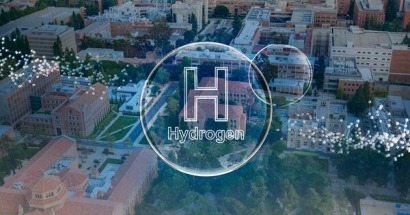
The work is part of the technology showcase selected and organized by the group Prototypes for Humanity from November 29th – December 2nd. The goal of the technology is to use renewable solar energy and biogas to produce hydrogen and high-quality cylindrical graphite through an environmentally sustainable process.
If developed at scale, this technology has the potential to be applicable to fuel cells, microgrids, and utility-scale hydrogen production.
"Having this innovative technology showcased during COP28 alongside 99 other innovative technologies highlights the importance of cultivating a broad range of climate solutions to help meet the global needs specific to each economy," said Neil Navin, Chief Clean Fuels Officer at SoCalGas.
"This technology could be capable of producing hydrogen, which could potentially be stored for later use. Additionally, the associated solid carbon developed from this process could be used to produce key components of batteries, which might help reduce battery production costs in the energy transition."
Over the past two years, the technology was successfully developed and demonstrated in a laboratory setting and is now advancing from the laboratory to a real-world demonstration. The next phase of the UCLA lead project is to secure additional funding, with five potential demonstration sites under consideration with SoCalGas if approved by the CPUC.
"Further development of this project could help generate the environmental and economic data needed to support greater adoption and commercialization of emerging low, zero, and even negative carbon hydrogen production technology," said Timothy Fisher, Professor at UCLA Mechanical and Aerospace Engineering.
"The field demonstration is slated to begin in the second half of 2024 and if scaled up further, could have the potential to be deployed at sizes ranging from modular fuel cells or microgrid backup systems to industrial or utility scale hydrogen production and storage systems. We also believe that the process offers significant potential to make hydrogen production more affordable because the high-value graphite co-product could be a crucial element to widespread electrification."
Clean energy innovations designed to decarbonize hard-to-electrify sectors are a key component of California's efforts to achieve carbon neutrality by 2045. To that end, SoCalGas continues to develop Angeles Link, a proposed clean renewable hydrogen pipeline system to serve Southern and Central California.
Angeles Link could be the nation's largest clean renewable hydrogen pipeline system and help significantly reduce greenhouse gas emissions from transportation, electric generation, industrial processes, and other hard-to-electrify sectors of the California economy.
SoCalGas is also working to help develop a state hydrogen blending standard by proposing pilot projects for approval by the CPUC. These projects could help to better understand how clean fuels like clean renewable hydrogen could be delivered through California's natural gas system.
As the CPUC noted in a recent decision, "Pilot projects and further study can also help the development of the clean renewable hydrogen market, enable a variety of uses cases, and contribute to achieving California's Climate goals."

